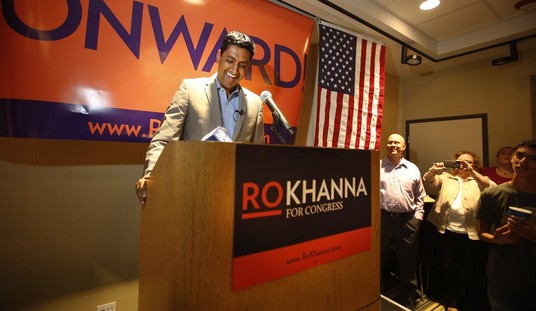The Bureau of Labor Statistics reported good news for the American economy today, which added 192,000 jobs in February. The additions pushed the jobless rate down under 9% for the first time in almost two years, but that number still has to be taken with a grain of salt:
Nonfarm payroll employment increased by 192,000 in February, and the unemployment rate was little changed at 8.9 percent, the U.S. Bureau of Labor Statistics reported today. Job gains occurred in manufacturing, construction, professional and business services, health care, and transportation and warehousing.
The number of unemployed persons (13.7 million) and the unemployment rate (8.9 percent) changed little in February. The labor force was about unchanged over the month. The jobless rate was down by 0.9 percentage point since November 2010. (See table A-1.)
Among the major worker groups, the unemployment rates for adult men (8.7 percent), adult women (8.0 percent), teenagers (23.9 percent), whites (8.0 percent), blacks (15.3 percent), and Hispanics (11.6 percent) showed little or no change in February. The jobless rate for Asians was 6.8 percent, not seasonally adjusted. (See tables A-1, A-2, and A-3.)
The number of job losers and persons who completed temporary jobs, at 8.3 million, continued to trend down in February and has fallen by 1.2 million over the past 12 months. The number of long-term unemployed (those jobless for 27 weeks or more) was 6.0 million and accounted for 43.9 percent of the unemployed. (See tables A-11 and A-12.)
Both the civilian labor force participation rate, at 64.2 percent, and the employment-population ratio, at 58.4 percent, were unchanged in February. (See table A-1.)
The key is this ratio of civilian participation in the work force. At 64.2%, it’s still at its lowest ebb in 27 years — in fact, almost exactly 27 years, since March 1984. The lower denominator makes the overall jobless rate look better than it should. If we were at the same participation rate as we saw in mid-2008, we would probably add two or three points to the unemployment rate. And at some time, those workers will re-enter the job-seeking population and the rate will rise accordingly.
The addition of 192,000 jobs is a good sign. We need to add somewhere between 100k-125K jobs each month to keep up with population growth in the nation, and this is one of the few months in the last three years to exceed that level. But while it’s a good month in that sense, we need the economy to add somewhere between 400k-500k jobs each month if we are to make a serious dent in the levels of unemployment and underemployment. The number of those marginally attached to the labor force — in other words, not looking for work — increased by 200,000 over last February, and the number of those who currently want a job but don’t have one went up by over 300,000 in the same period.
Update: Jeanine Aversa at the AP notes a couple of positive trends in the new numbers, but also a big problem related to my analysis above:
When factoring in the number of part-time workers who would rather be working full time and those who have given up looking for work, the percentage of “underemployed” people dropped to 15.9 percent in February. That’s the lowest in nearly two years.
But …
The number of unemployed people dipped to 13.7 million, still almost double since before the recession.
To cut that in half at this rate (or just to take off 6.5 million), assuming 100K each month to keep up with population growth, we would need 71 months to get unemployment back to its pre-recession level. And we would need that on a consistent basis, not 36K one month and 192K the next.







Join the conversation as a VIP Member